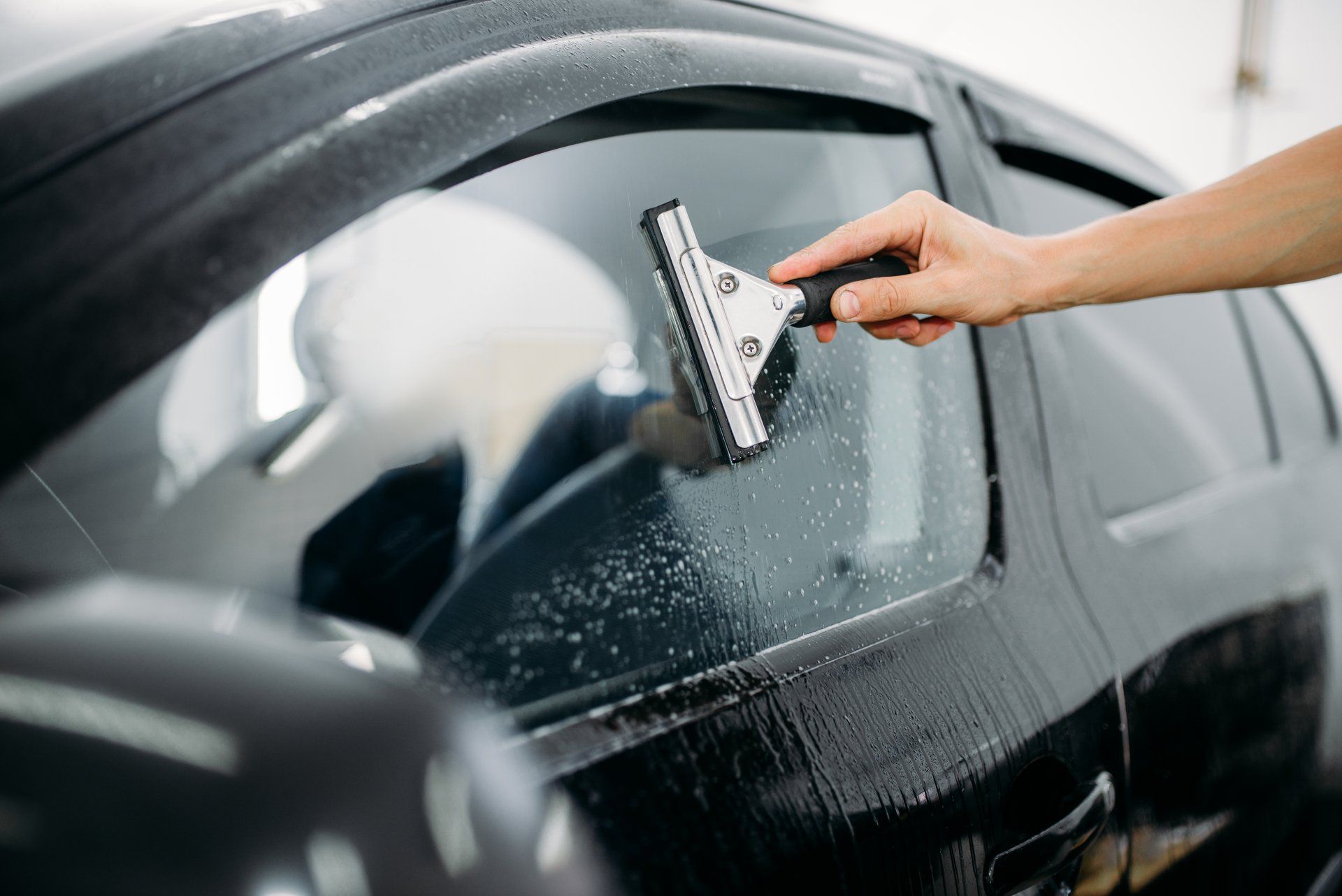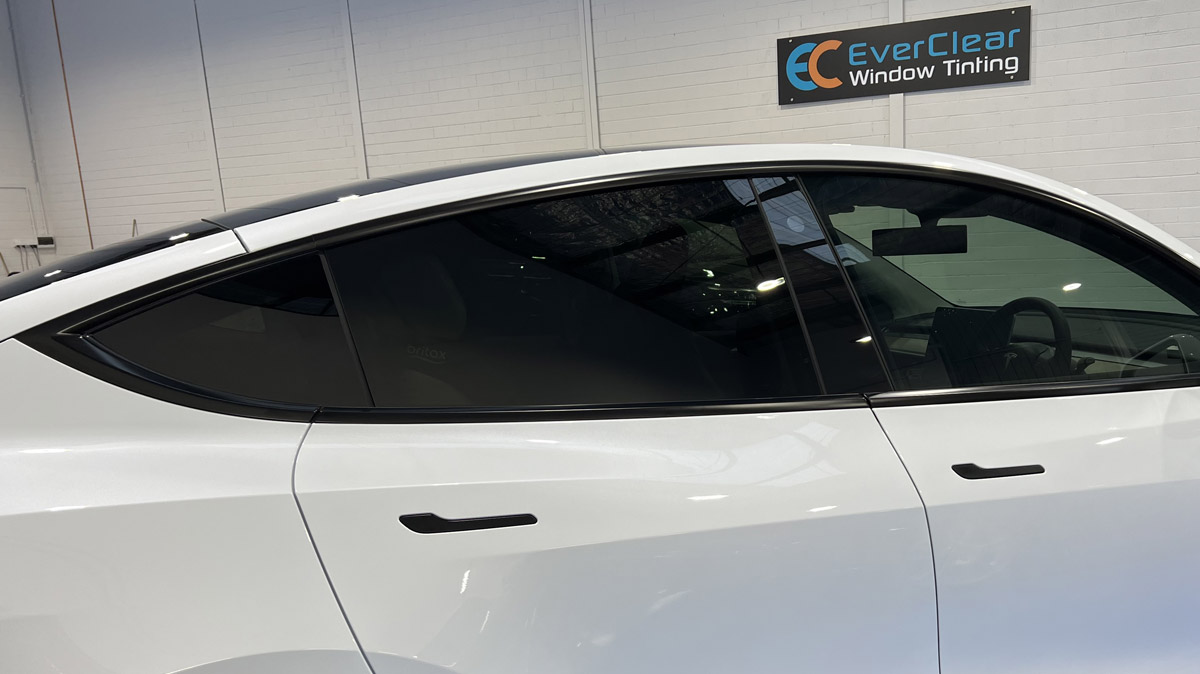How Window Tinting Can Keep Your Car Cabin Cooler During the Summer
How Window Tinting Can Keep Your Car Cabin Cooler During the Summer
Blog Article
Window Tinting Options: Discover the Right Shade for Your Style and Requirements
Selecting the appropriate window tint for your lorry involves a careful factor to consider of numerous elements, consisting of personal looks, practical demands, and legal restrictions. With choices ranging from light tintss that use marginal personal privacy to darker tones that improve privacy, the options can be frustrating. window tinting. Understanding the ramifications of noticeable light transmission (VLT) percents and the advantages of various materials is crucial in making an educated option. As you ponder your alternatives, you may question how these aspects interplay to develop not simply a look, however a tailored experience when driving.
Comprehending Window Tinting Degrees
When thinking about window tinting, it is necessary to recognize the different degrees of tint available, as they considerably affect both looks and functionality. Window tinting is classified based upon Visible Light Transmission (VLT) percentages, which suggest the quantity of light permitted to pass via the glass. The VLT percentage can range from very light (over 70%) to very dark (below 5%)
The primary degrees of tint consist of clear, which offers UV defense without altering exposure; light tint (over 50% VLT), which slightly lowers glow while preserving visibility; tool tint (around 35% VLT), striking a balance between personal privacy and light transmission; and dark tint (below 20% VLT), supplying substantial privacy and heat reduction yet limiting outward presence.
Understanding these degrees is vital as they can impact driving safety and security, legal conformity, and individual comfort. Additionally, neighborhood regulations typically determine acceptable tint levels, varying by state or district. Prior to picking a tint, it is a good idea to research study and make sure adherence to these policies while thinking about individual choices for style and functional advantages.
Popular Tint Tone Explained

One of the most prominent choices is the traditional dark tint, normally varying from 20% to 5% VLT (Noticeable Light Transmission) This shade uses maximum personal privacy and a streamlined, sophisticated appearance. It effectively obstructs UV rays and warm, making it excellent for bright climates, though it might restrict visibility during the night.
Conversely, lighter tones such as 35% or 50% VLT supply a more subtle look while still providing some level of privacy. These tones are excellent for those looking for an equilibrium between appearances and functionality, as they enable for far better presence and comply with numerous legal standards.
One more emerging choice is the ceramic tint, which can can be found in a variety of shades - window tinting. It uses superior warm rejection and UV protection without considerably modifying the automobile's appearance

Lawful Laws for Window Tinting
Understanding the lawful policies surrounding window tinting is essential for car owners seeking to personalize their cars and trucks. Each state in the united state has specific legislations controling the darkness or lightness of window tintss, usually gauged by Visible Light Transmission (VLT) percentage. VLT refers to the amount of light that can go through the glass and the film combined.
In several states, laws dictate various VLT percents for different windowss, including front windshields, side windowss, and back windowss. Some states may permit a tint of 70% VLT for windshields while allowing darker tintss for rear windowss. Additionally, specific states have constraints on reflective tintss, which can produce glare for various other vehicle drivers.
Failure to conform with these laws can cause penalties, mandated removal of the tint, and increased insurance premiums. Car owners ought to get in touch with neighborhood laws or state DMV websites to guarantee they are within legal limitations prior to proceeding with installment. Comprehending these guidelines not only aids stay clear of legal effects however also makes sure a risk-free driving experience.
Advantages of Different Tint Materials
Checking out the advantages of numerous tint materials reveals substantial benefits that can improve both the functionality and aesthetic charm of an automobile. Each product supplies unique attributes fit to particular demands and preferences.
Dyeded window films are prominent for their cost and capacity to decrease glow. They properly obstruct UV rays, shielding the inside from fading, though they browse around this site might not supply the highest heat rejection. Metalized films, on the other hand, deal remarkable warmth decrease and UV protection because of their reflective homes. They can improve personal privacy and safety however may interfere with electronic signals.
Ceramic window films stand for a costs choice, giving outstanding warmth being rejected while maintaining exposure. They are non-metallic, thus staying clear of any kind of signal disturbance, and are extremely sturdy, standing up to scratches and fading gradually. In addition, ceramic films do not consist of dyes, making certain a longer-lasting look.
Lastly, hybrid films integrate elements from dyeded and metalized alternatives, supplying a well balanced performance in terms of heat rejection, glow decrease, and expense. Each tint product serves distinct purposes, permitting car owners to choose the very best suitable for their way of living and visual preferences, inevitably improving their driving experience.
Choosing the Right Tint for You
Finding the right window tint involves thinking about different aspects, consisting of personal preferences, car type, and local laws. Examine your individual style and preferred level of privacy, as these will assist your choice of tint shade. Darker tintss provide enhanced privacy but may not appropriate for all drivers, especially those that like an even more open feel inside their vehicle.
Next, consider your vehicle kind, as the dimension and shape of windowss can affect the effectiveness of particular tintss. As an example, larger windowss might take advantage of reflective tintss that lower glare while smaller windowss could be a lot more fit to dyeded films that supply refined aesthetic appeals.
In addition, it's important to check neighborhood guidelines concerning window tinting. Several states enforce limitations on the permitted darkness and reflectivity, especially for front windowss. Compliance with these regulations is vital to ensure and stay clear of fines safety.
Last but not least, evaluate the tint product that finest matches your needs. Alternatives consist of dyeded, metalized, ceramic, and hybrid films, each offering one-of-a-kind advantages relating to heat being rejected, UV this page defense, and resilience. By considering these variables, you can with confidence select a home window tint that lines up with your design and practical requirements.
Conclusion
To conclude, picking the proper window tint needs cautious factor to consider of different factors, consisting this hyperlink of VLT portions, local laws, and the desired visual. Different tint materials use special benefits that can boost automobile convenience and protection. By extensively understanding the readily available choices and straightening them with practical demands and private preferences, one can accomplish an ideal equilibrium between style and functionality in window tinting selections.
Picking the appropriate window tint for your car includes a cautious consideration of different aspects, consisting of individual aesthetic appeals, functional demands, and legal restrictions. Each state in the U.S. has details laws governing the darkness or lightness of window tintss, commonly measured by Visible Light Transmission (VLT) portion. Some states might permit a tint of 70% VLT for windscreens while allowing darker tintss for rear windowss.Finding the right window tint involves considering different aspects, consisting of personal choices, automobile type, and local policies.In final thought, picking the proper window tint calls for mindful factor to consider of various variables, including VLT portions, neighborhood policies, and the wanted visual.
Report this page